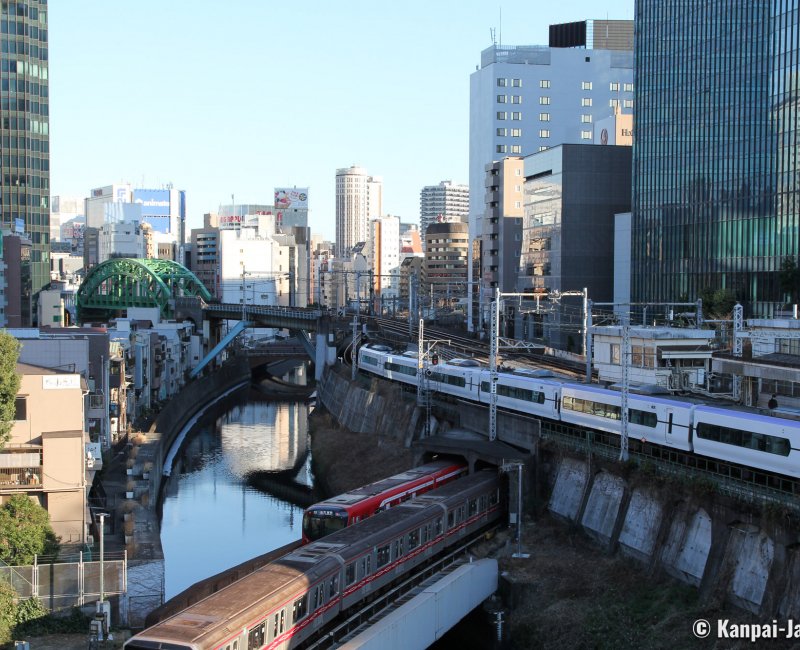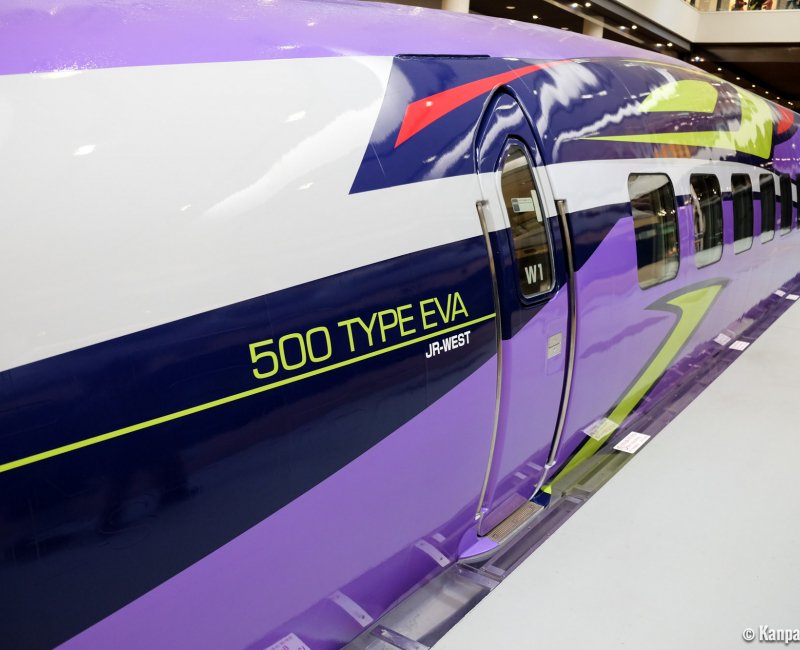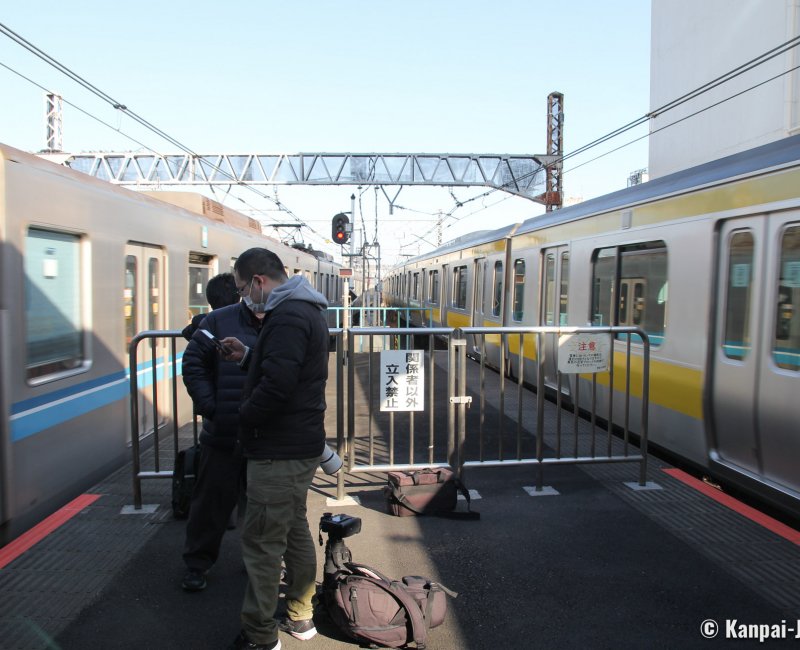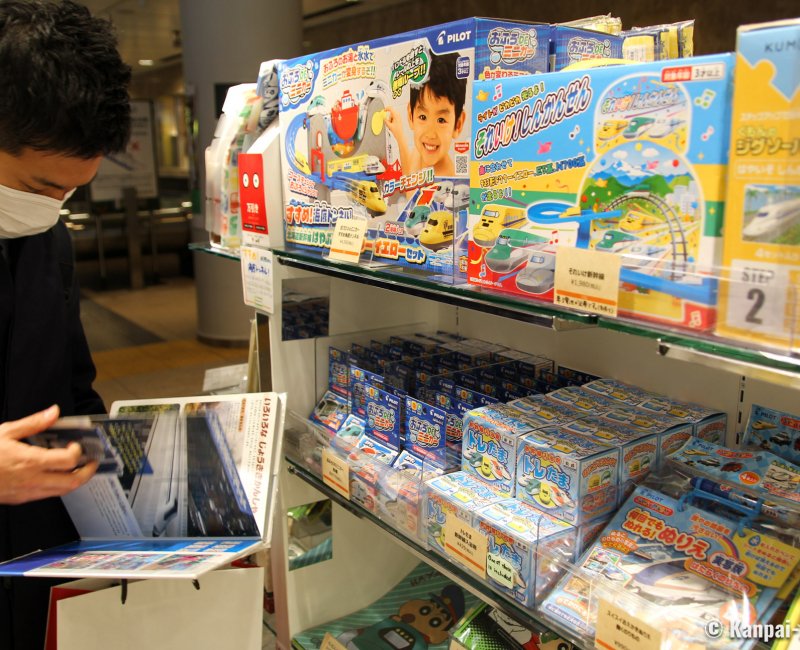Densha Otaku
🚅 The Train Aficionados in Japan
The term "densha otaku" was coined to refer to people passionate about train and all things related to trains in Japan. The train culture is indeed very developed among the Japanese population who likes train travel. The quality and the density of the archipelago’s railway network, one of the best in the world, are part of the reasons for this enthusiasm.
Named 電車オタク densha otaku in Japan, people passionate about trains are called "railway / train enthusiasts", “"trainspotters" or "train nerds".
This sub-culture widely spread in the Japanese population does not have any pejorative connotation. On the contrary, it indicates that passionate have become experts of a specific field, namely the trains (densha in Japanese).
Other expressions exist to name them, built on the word 鉄道 tetsudo that means "railway":
- 鉄道ファン tetsudo fan that could be translated literally as "railway fan";
- 鉄男 tetsuo for men railway passionate; and,
- 鉄子 tetsuko for women fans of trains.
Estimations find more than 2 million densha otaku in the archipelago where the railway holds a prominent place, be it for the train’s very democratized used by the population, but also for cultural production and merchandising, such as video games offering train driving simulation on a Japan Railways (JR) line.
It was even integrated in the national calendar, with October 14 being the railway day in Japan, and called 鉄道の日 tetsudo no hi. On this occasion, several events and activities are staged in the country, and especially a festival in Tokyo’s Hibiya Park, with pictures and haiku poems contests on the topic of railway.

A fascinating organization both precise and marketed
The Japanese archipelago is checked by a very dense railway network that is deeply intertwined with the urban environment. Quite logically, the main island Honshu is the most covered territory. The smallest islands and specific areas such as Awaji or Okinawa are however not served by train.
Tokyo megalopolis’ railway transport is sprawling. In the center of the capital, there are 13 subway 🚇 lines (operated by the city or private), about twenty suburban train lines operated by a dozen of companies, without taking into account the Shinkansen bullet train lines offering faster and further travel in the rest of Japan.
Shinjuku Station in the west of the capital is one of the biggest stations in the world, and the most frequented with about 1,3 billion users every year. Shibuya and Ikebukuro stations also attract about 1 billion travelers per year.
Despite this high volume of travelers, the Japanese railways work very well and benefit overall from a great organization and timeliness.
For example, on the Yamanote line each stop is characterized by its own melody when the train arrives at the platform, so passengers know where they are upon hearing it. Takadanobaba Station is renowned for broadcasting soundtracks from the Astro Boy anime, based on the manga by Osamu Tezuka (1928 - 1989) that makes the main character from the neighborhood.
The carriages are usually well-maintained, clean and comfortable. Long train travels are good occasions to eat and taste the regional specialties packed in a bento 🍱 meal sold in the station, that are named 駅弁 ekiben.
Train is not only convenient in Japan, it is also a lifestyle, encompassing the contemplation of landscapes and fascinating for the innovation and skill levels necessary to operate the extraordinary daily ballet of trains.
Railway companies have understood the impact of the service quality on their customers, and they keep them using an advanced marketing approach, very convincing on the merchandising and other events staging. For example: trains decorated with very popular licenses in Japan such as Hello Kitty, Pokémon or Evangelion are frequently operated on specific time frames and courses. It becomes a quest for children and adults alike to spot them at the station and to board them.

Railways related passions types
The densha otaku continuously live their passion. It should be more appropriate to talk about passions, in the plural form, as the Japanese railway universe, as vast as it is detailed, generated several types of train enthusiasts. There are about forty types, from which we selected the following short-list:
- 撮り鉄 Tori-tetsu loves taking pictures of trains and is often carrying a camera with a big lens. They are looking for the perfect picture, for example of a train passing under a sakura 🌸 tunnel in spring, or to capture the last trip of a train set being withdrawn from service.
- 乗り鉄 Nori-tetsu is keen on boarding trains and organizes many trips to use as many lines as possible, especially the touristic and scenic ones.
- 駅弁鉄 Ekiben-tetsu is fond of tasting all the ekiben, the packed lunches to purchase in stations and that vary according to the region (estimates found more than 2,000 variations).
- 音鉄 / 音響鉄 Oto-tetsu or Onkyo-tetsu is passionate about the various sounds and noises of the locomotives, that they record, and are able to recognize a train to the sound it produces.
- ちび鉄 Chibi-tetsu is a child fascinated by the railways, who plays the miniature train and wants to go to the station to watch trains.
- ママ鉄 Mama-tetsu is the mother of such child who has become a train enthusiast following the steps of her offspring.
- モケイテツ Mokei-tetsu is modeler and collector of miniature train sets and creates detailed and large dioramas.
- 押し鉄 Oshi-tetsu collects touristic stamps of the Japanese stations named 駅スタンプ eki-stamps.
- 時刻表鉄 Jikokuhyo-tetsu memorized the train schedules by station or by train line. They use the printed schedule tables like the thick directories the tellers peruse when booking a ticket. They are thus able to provide the best route taking into account the transfer times in a few moments of thinking.
- 駅鉄 Eki-tetsu is interested in the stations in particular, and what kind of services they provide.
Lastly, some hardcore fans try to live in houses on a train line or with a nice view on one or several lines. Some hotels 🏨 located near stations also use their location to promote rooms with a view on the railways.

Typical railway centered activities in Japan
Railway Museums
Several railway museums exist throughout the archipelago, and especially in larger cities. Most of them are well done, with immersive experiences such as boarding at the front of the train and driving simulators. There is often a themed playground for children. We made a short-list of the largest and / or most interesting railway museums in Japan:
- The Railway Museum (鉄道博物館) in Omiya in Saitama City in the north of Tokyo
- Tokyo Metro Museum (地下鉄博物館) in Edogawa ward, in the east of the capital, bay side
- Tobu Museum (東武博物館) in Sumida ward, not far from the Tokyo SkyTree
- Keio Rail-Land (京王れーるランド) near Tama-Dobutsukoen station in Hino city, in the west of Tokyo prefecture
- Ome Railway Park (青梅鉄道公園) by the JR East Company, in the west of Tokyo prefecture
- Denbus Train and Bus Museum by Tokyu company (電車とバスの博物館) in Kawasaki
- SCMaglev and Railway Park (リニア・鉄道館) of the Central JR in Nagoya
- Kyoto Railway Museum (京都鉄道博物館) near the JR station
- Niitsu Railway Museum (新津鉄道資料館) in Niigata.
Model stores and merchandising
Hobby stores dedicated to train fans are usually located in the shopping malls of large stations such as Tokyo Station or in geek and otaku districts. Akihabara electric town is still the best place to purchase miniature trains. The huge Yodobashi Camera 📷 Multimedia Akiba store in particular has an impressive array of model scales of locomotives, track circuits, miniature stations and items to create a landscape and build dioramas.
There are also train-themed merchandising shops in the surroundings, with a choice of daily objects bearing the effigy of Japanese trains 🚅: train-shaped bento boxes, or socks decorated with the various "noses" of the Shinkansen, as well as purses and stationery.
Spots for train photographers
To watch the train ballet, the best place is an elevated observation point, most of the time bridges that overlook several rail tracks. In Tokyo, we recommend the following places:
- Hijiri-bashi bridge that crosses the Kanda river and several tracks, located just above Ochanomizu Station near Akihabara. With the capital’s tall buildings in the background, the viewpoint offers up to 6 trains and metros operating at the same time and winding between the buildings and the river;
- Shimogoindenhashi Bridge, that crosses 13 tracks (trains and Shinkansen) at Nippori Station, at the limit of Yanaka traditional district;
- The outdoor terrace of Kotsu Kaikan Coline shopping mall, or the outdoor garden of Kitte Marunouchi, that both have a close-up view on the Tokaido Shinkansen arriving in Tokyo Station.
Densha otaku carrying their imposing cameras can also be spotted at the end of the station’s platform, waiting for their favorite train arriving from afar, like paparazzi hunting for stars on the red carpet.
The colorful seasons of spring and autumn are also favorable to beautiful train pictures, with blooming sakura trees or maple trees’ red koyo 🍁 foliage framing the scenery.
Train enthusiasts’ best practices in the stations
Train enthusiasts tourists traveling in Japan should follow the advice below to avoid any slip up and make sure to abide to the collective rules, especially in the stations:
- Buy a platform ticket 入場券 Nyujo-ken, which grants access to the train platform in the station, without boarding the train. It is sold for people accompanying travelers, and allows all densha otaku to use the station for a cheaper fee than passengers (usually less than ¥200 / ~US$1.28 per ticket);
- On the platform, do follow the safety rules, such as do not come too close to the tracks and do not put the camera beyond the railing due to the risk of it falling;
- Lastly, do not hinder the train users’ movements, as they quickly get on and get off at each stop in the station.




